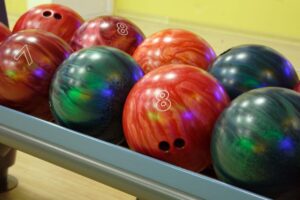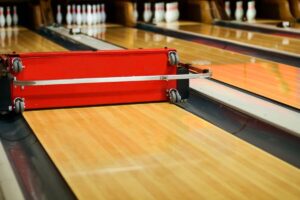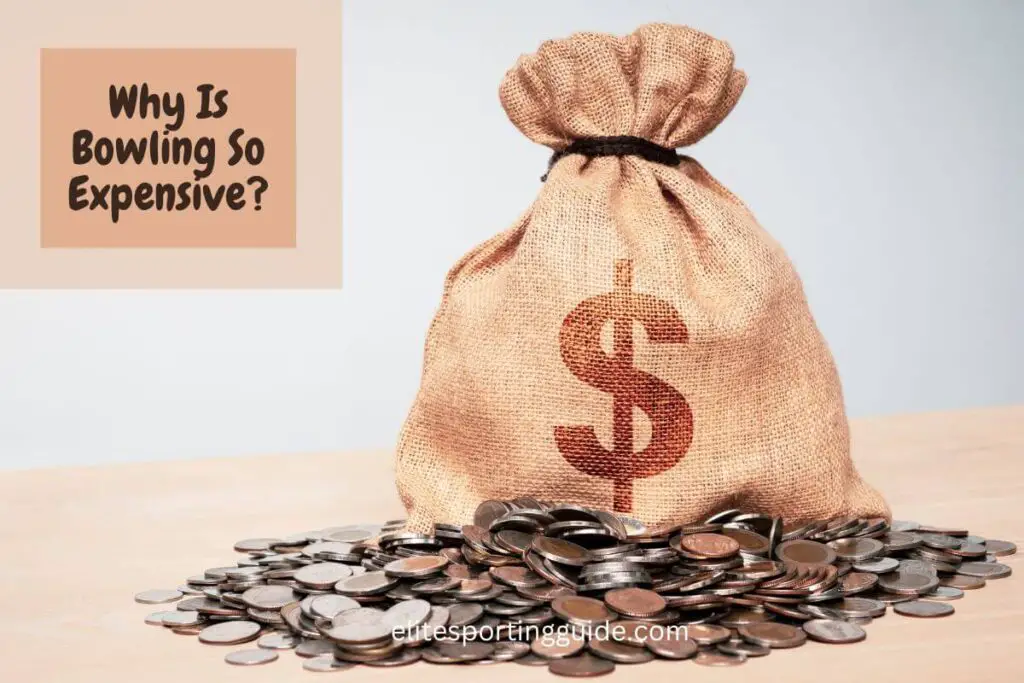From lane rentals to shoe fees, the cost of a bowling outing can add up quickly. Have you ever wondered why bowling is so expensive?
In this article, we seek to highlight the factors that contribute to the high cost of bowling.
By understanding the underlying reasons, you’ll gain insights into the expenses associated with running a bowling center and the various elements that impact the overall pricing structure.
Why Is Bowling So Expensive?
Bowling can be expensive due to the costs associated with facility rental and maintenance, specialized equipment, staffing, utilities, and operational expenses. Additionally, demand during peak hours and the need for regular upkeep and renovations can further contribute to the overall cost.
Facility Costs: Understanding the Expenses of Bowling Centers
Facility costs play a significant role in the overall expense of bowling centers.
Firstly, the building and renting expenses form a substantial portion of the budget.
Bowling centers require ample space to accommodate multiple lanes, seating areas, and amenities.
The location of the center also impacts the rental costs, as prime areas or city centers tend to come with higher prices.
The layout and design of the building must be conducive to a comfortable and enjoyable bowling experience, which may involve additional construction or renovation expenses.
Secondly, specialized equipment is a significant investment for bowling centers.
They need to procure high-quality bowling balls, pins, lane surfaces, scoring systems, and pinsetters, among other equipment.
Acquiring these items can be costly, especially if the center aims to offer a modern and technologically advanced experience.
Moreover, regular maintenance and repairs are necessary to keep the equipment in optimal condition.
This includes ensuring the smooth functioning of pinsetters, addressing lane damages, and conducting routine inspections.
All these factors contribute to the facility costs, ultimately influencing the pricing structure of bowling centers.
Equipment and Maintenance

Equipment and maintenance expenses are essential factors contributing to the overall cost of bowling.
Bowling centers heavily rely on specialized equipment to provide a seamless and enjoyable experience for their customers.
This includes investing in high-quality bowling balls, pins, shoes, scoring systems, and automated pinsetters.
The initial purchase or lease of this equipment can be a significant expense for bowling centers.
Moreover, ongoing maintenance is central to keep the equipment in optimal condition.
Regular inspections, repairs, and replacements are necessary to ensure the smooth operation of the bowling lanes and equipment.
This maintenance can involve costs for hiring skilled technicians, purchasing spare parts, and conducting routine upkeep.
The costs associated with lane resurfacing, oiling, and polishing to maintain consistent playing conditions also contribute to the overall expenses.
By investing in quality equipment and dedicating resources to regular maintenance, bowling centers aim to provide a safe and enjoyable experience for bowlers.
However, these factors significantly impact the overall cost of bowling, which is often reflected in the prices charged to customers.
Staffing
Staffing is a key component of running a bowling center, and it plays a significant role in the expenses associated with the activity.
Bowling centers require a team of staff members to ensure smooth operations, provide customer service, and maintain a safe and enjoyable environment for bowlers.
The staffing expenses include wages and benefits for employees.
Bowling centers typically employ individuals to manage the front desk, assist with shoe rentals, operate the scoring systems, and oversee the general functioning of the facility.
These employees may include lane attendants, mechanics, technicians, customer service representatives, and supervisors.
Additionally, staffing costs extend beyond wages. Other expenses related to staff members include training, insurance coverage, payroll taxes, and possibly even uniforms.
Bowling centers also need to allocate resources for hiring and recruitment processes to ensure a competent and reliable workforce.
The staffing expenses are an essential consideration for bowling centers as they strive to provide a high level of customer service and maintain operational efficiency.
These costs contribute to the overall pricing structure of bowling, as they are necessary to deliver a seamless and enjoyable experience for bowlers.
Utilities and Operational Expenses
Utilities and operational expenses are significant factors that contribute to the cost of bowling.
Bowling centers require various utilities to operate effectively and provide a comfortable environment for bowlers.
These utilities include electricity for lighting, heating, and cooling systems, as well as water for restrooms and cleaning purposes.
The high energy demands of maintaining a bowling center can result in substantial utility bills.
In addition to utilities, operational expenses encompass a range of costs associated with running the facility.
These expenses include insurance coverage to protect against accidents or liability claims, taxes levied on the business, marketing and advertising expenditures to attract customers, and administrative costs for managing the operations of the bowling center.
These expenses are necessary for the day-to-day functioning and promotion of the facility.
Furthermore, investments in technology, such as computerized scoring systems and other automated features, contribute to the operational expenses.
Bowling centers often allocate funds for ongoing software updates and equipment upgrades to enhance the overall experience for customers.
All of these utility and operational expenses factor into the pricing structure of bowling, as they are necessary to maintain the facility, provide essential services, and ensure a safe and enjoyable environment for bowlers.
Time Slot Demand: When Popularity Drives Up the Price
Time slot demand is a significant factor that influences the cost of bowling. Bowling centers experience peak hours when demand is high, such as evenings, weekends, and holidays.
During these popular time slots, the price per game or lane rental tends to increase.
The increase in price during peak hours is primarily driven by the principles of supply and demand.
As more people want to bowl during these sought-after time slots, the available lanes become limited, and the demand exceeds the supply.
To manage the influx of customers and ensure fair access to the lanes, bowling centers may increase prices to balance the demand and allocate resources efficiently.
By implementing higher prices during peak hours, bowling centers aim to incentivize customers to choose less busy time slots, which helps distribute the demand more evenly throughout the day.
This practice also allows the centers to generate additional revenue during high-demand periods to offset the operational costs and maintain profitability.
However, it’s worth noting that bowling centers may still offer discounted rates or special promotions during off-peak hours to attract customers and make bowling more accessible and affordable outside of the busiest time slots.
Post you may like: Is Bowling Luck Or Skill?
Upkeep and Renovations

Upkeep and renovations are important aspects of maintaining a high-quality bowling center, but they also contribute to the overall cost of bowling.
Bowling centers invest in regular upkeep and renovations to provide a pleasant and modern environment for bowlers.
One major component of upkeep is lane maintenance.
Bowling lanes require regular resurfacing, oiling, and cleaning to ensure consistent and optimal playing conditions.
These maintenance activities help prevent lane damage, maintain proper ball reaction, and extend the lifespan of the lanes.
The pinsetters, scoring systems, and other equipment need routine inspections, repairs, and replacements to ensure smooth operation.
Renovations are another factor that impacts costs. Over time, bowling centers may need to update their facilities to keep up with changing trends and customer preferences.
This can involve refurbishing seating areas, upgrading lighting and sound systems, modernizing scoring technology, or enhancing the overall ambiance of the center.
Renovations often require significant investments in materials, labor, and professional services, all of which contribute to the expenses.
While upkeep and renovations can add to the cost of bowling, they are essential for maintaining a competitive edge, attracting customers, and providing an enjoyable experience.
By continually investing in the upkeep and renovation of their facilities, bowling centers aim to create a welcoming and contemporary atmosphere for bowlers.
Finding Affordable Options: Tips to Make Bowling More Budget-Friendly
Finding affordable options can help make bowling more budget-friendly without sacrificing the fun and enjoyment of the activity. Here are some tips to consider:
1. Off-Peak Hours: Bowling centers often offer discounted rates during non-peak hours, such as weekdays or early mornings.
Take advantage of these less busy times to enjoy bowling at a lower cost.
2. Special Promotions and Packages: Keep an eye out for special promotions, such as discounted rates for group bookings, student discounts, or family packages.
Bowling centers frequently run promotional offers that can help you save money.
3. Local Deals and Coupons: Check local newspapers, websites, and coupon books for deals and discounts specific to bowling centers in your area.
These can provide significant savings on lane rentals, shoe rentals, or even food and beverage options.
4. Membership or Loyalty Programs: Some bowling centers offer membership or loyalty programs that provide perks such as discounted rates, free games, or exclusive offers.
Consider joining these programs to access ongoing savings.
5. Bring Your Own Equipment: If you’re a frequent bowler, consider investing in your own bowling shoes and ball.
Owning your equipment can save you money on shoe rental fees and allow you to bowl comfortably with a ball that fits your hand perfectly.
6. Share Lanes: Bowling is more enjoyable with friends and family, so consider sharing the cost by splitting lane rental fees among a group.
This way, you can have fun together while reducing individual expenses.
7. Plan Ahead and Book in Advance: If you have a specific date and time in mind, it’s often beneficial to book your bowling session in advance.
Some bowling centers offer discounted rates for advance bookings, ensuring you secure your preferred time slot at a lower price.
Post you may be interested in: Can You Go Bowling In A Dress?



